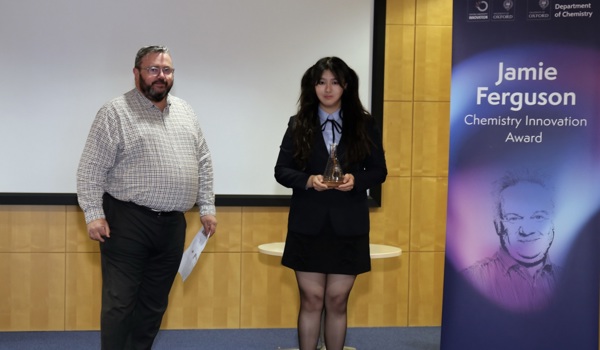07 Mar 2022
DPhil Student Shortlisted for STEM for Britain final
Third year Robotics DPhil student Russell Buchanan is one of 10 engineering researchers chosen to present at this year's final.

Left: ANYmal C robot exploring a limestone mine in the UK. Right: ANYmal B robot inspecting a sewer in Switzerland.
Third year DPhil student at the Oxford Robotics Institute (ORI), Russell Buchanan, has been selected as one of ten engineering researchers to present his research at the Houses of Parliament in the 2022 final of the STEM for Britain Awards.
Russell will be giving a poster presentation on 7 March about his DPhil research entitled “Learning Inertial Sensing for Robotics”. The research focuses on using trained networks to estimate the position of legged robots more accurately, with data gathered during the exploration of a real UK mine.
The annual STEM for Britain Awards is a competition running since 1997 and is an opportunity for early-career research scientists, engineers, and mathematicians to exhibit posters to members to both Houses of Parliament at Westminster. The ground-breaking research presented aims to generate dialogue and connections between researchers and members of parliament as well as contribute to national incentives.
Russell was selected as one of 10 engineering researchers from across UK universities to present to Parliament. He will be presenting his research into producing alternatives to camera or laser sensors to track robot positioning. By utilising accelerometers and gyroscopes, known as Inertial Measurement Units (IMUs), instead of the traditionally used sensors, researchers can estimate the robot's position, even in visually challenging environments.
"This poses a huge opportunity for us to use legged robots for jobs that are too dangerous for humans."

Russell Buchanan is currently a third year DPhil student at the Dynamic Robot Systems lab, led by Professor Maurice Fallon at the Oxford Robotics Institute. Originally from Montreal, Canada, Russell received a Bachelor of Engineering in Electrical Engineering from McGill University.
He then began research on whole-body planning for legged robots at ETH Zurich, receiving a Master of Science in Robotics. In 2019 he arrived in Oxford to start a DPhil developing new proprioceptive perception algorithms for legged robots.
“Legged robots have the ability to walk anywhere that humans can walk, for example up stairs or over gaps”, he says. “This poses a huge opportunity for us to use legged robots for jobs that are too dangerous for humans such as exploring a collapsed mine or responding to a nuclear disaster. Our research group develops new perception algorithms for legged robots which enable them to map their surroundings and localise themselves in the world. These perception abilities are essential to automate robots for these dark, dangerous and dirty jobs."
“Most research focuses on using cameras or lasers; however these sensors don’t function very well in visually challenging environments like a dark and dusty mine or a foggy sewer. Instead, our approach is to use accelerometers and gyroscope - together referred to as Inertial Measurement Units (IMUs)."





